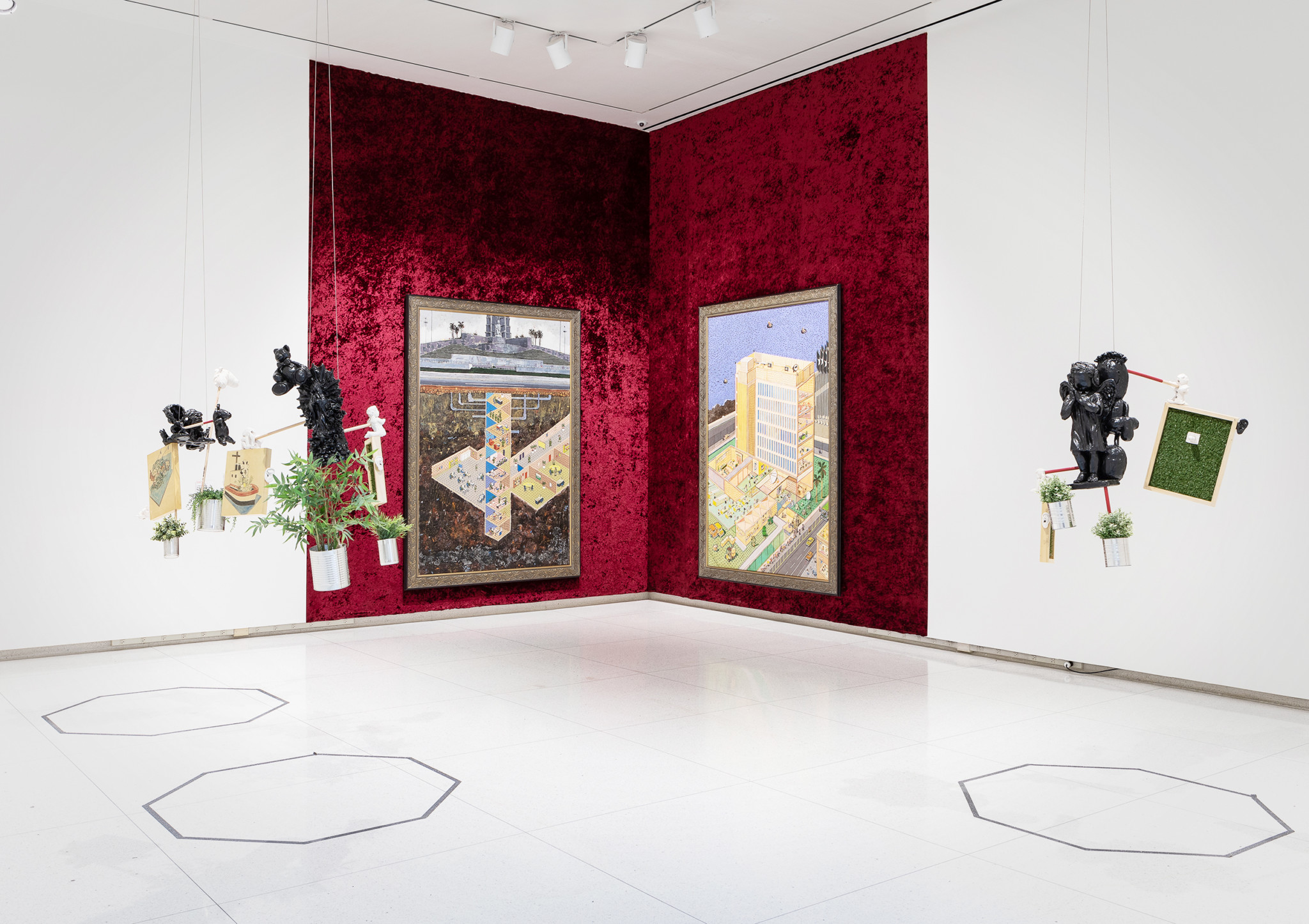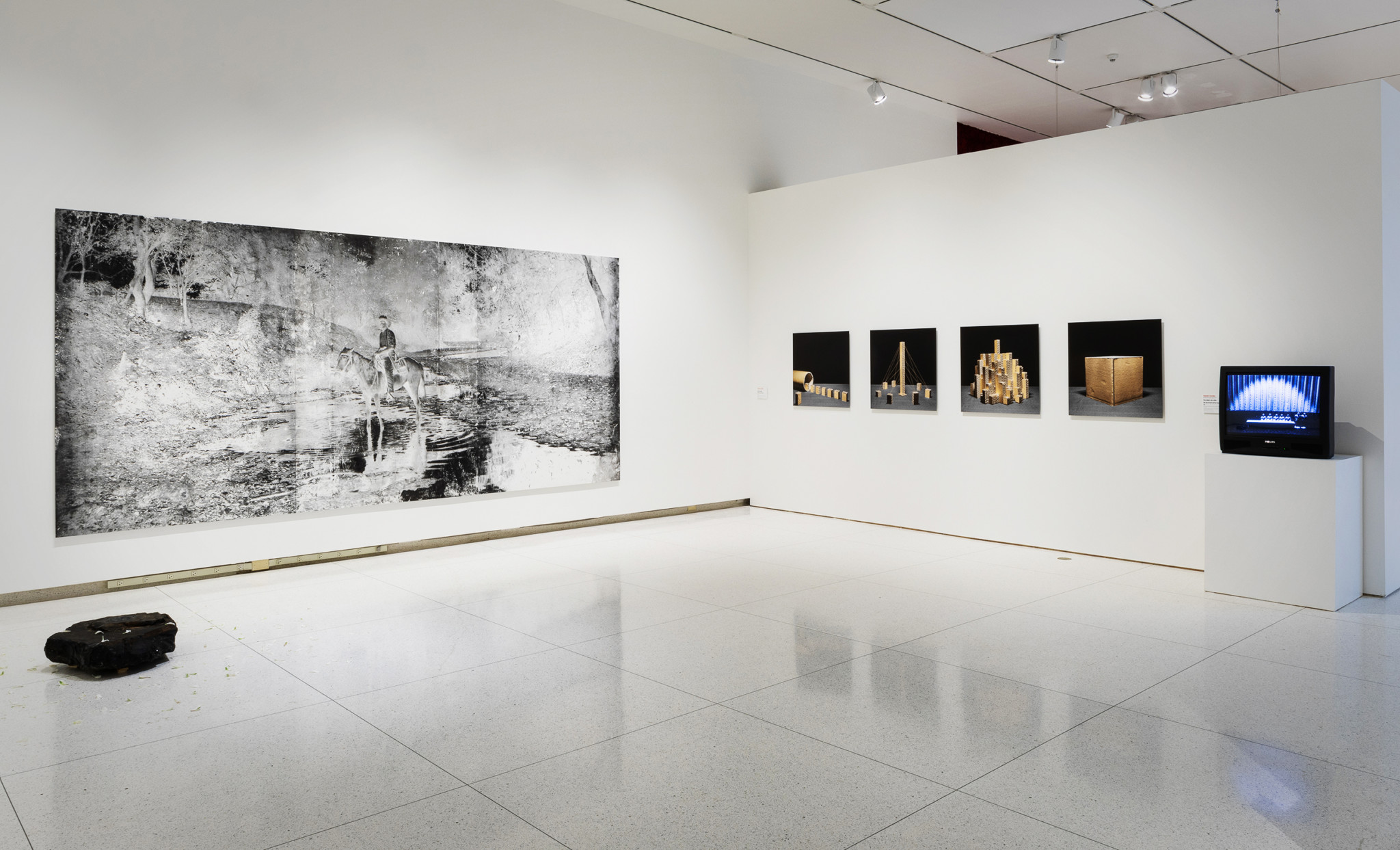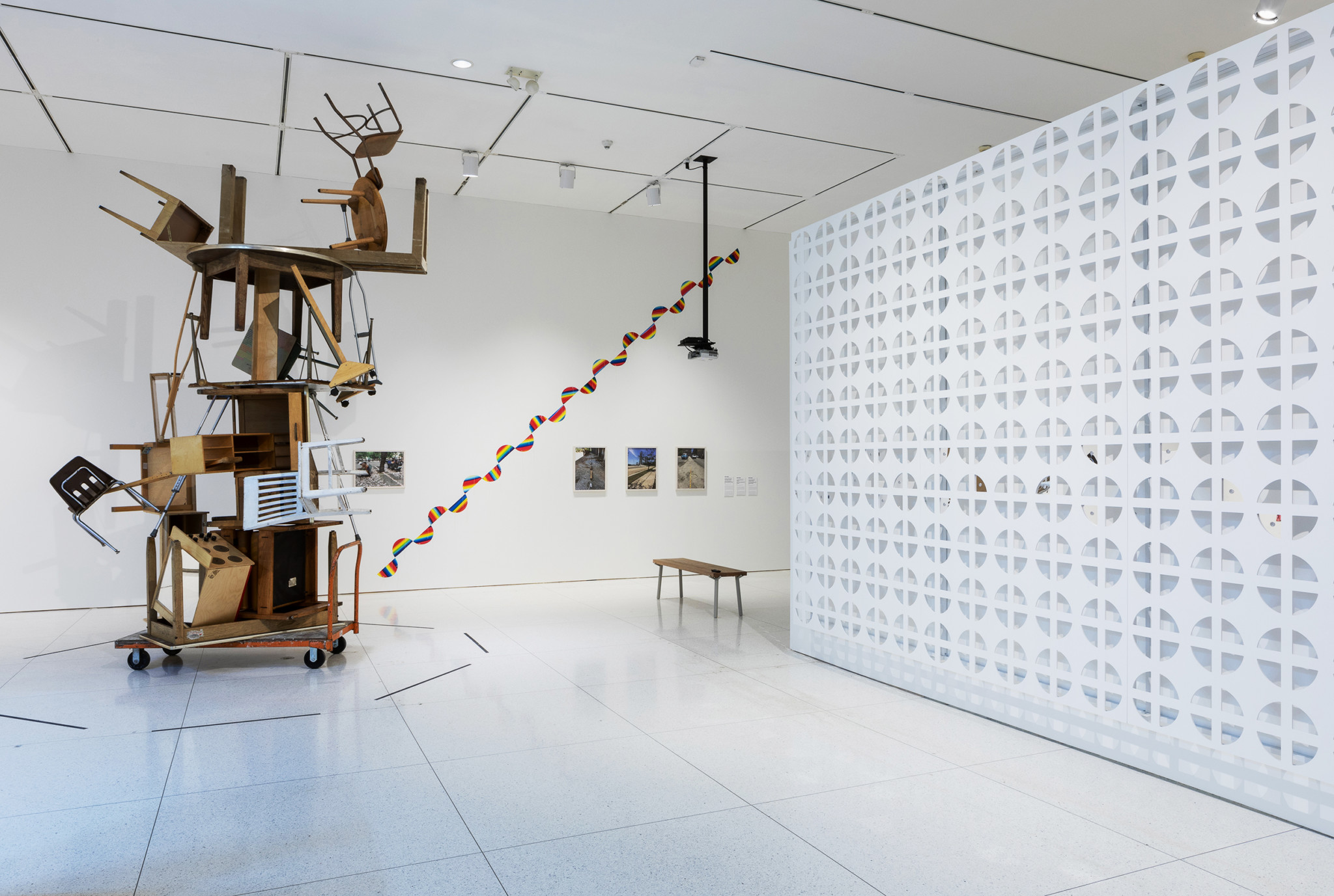Ditching the usual museum opening wine and cheese platter soirée for food trucks and live music, the Smart Museum of Art hosted a summer cookout earlier this month in conjunction with the opening of its new exhibit with the National Museum of Mexican Art, “Cross Currents / Intercambio Cultural.” Featuring tacos, alcohol, and (((SONORAMA))), a Chicago based DJ collective known to spin classic Latin tunes, it was the perfect summer day to host an outdoor event. The reception, on the lawn outside the Smart building on the University of Chicago campus, drew a large crowd to the opening. Featuring works of twelve artists, six based in Chicago and six in Havana, the east gallery of the museum showcases a range of mediums—from performance to printmaking—all dealing with personal histories, collective memories, and the archive.
Designed like a maze, the show begins and ends with Linocut prints on Kitakata paper—a fibrous material with a shine to it—by Chicago-based Nicaraguan printmaker Carlos Barberena that cover the wall and can easily be mistaken for decoration. Further into the show is an installation by Celia-Yunior, titled “An Ecology of Frictions.” The Havana-based duo’s work simulates the tension between a controlled environment and natural elements, and reflects on the tension between immigration policies and their effects. Composed of the Boston Ivy, a wooden trellis, and the work of sociologists Ezra Park and Ernest Burgess from the Special Collection Research Center at the UofC, the ecosystem they’ve created is a visual metaphor for the way in which migrants (the Boston Ivy) surpass man-made boundaries in spite of laws (the trellis), based on Park and Burgess’ observations.
Oftentimes, in a bid to stay relevant and attract audiences, fresh artwork ends up spilling into spaces on the internet, making it futile to attend an exhibition in person—why attend a show if the artist is going to post documentation and pictures on their Instagram? However, being present and surrounded by all of the context elevates the work at “Cross Currents.” Take, for instance, Puerto Rican artist Edra Soto’s interactive iteration of “GRAFT (Cuba),” a version of which was presented at the Chicago Cultural Center earlier this year, and which consists of a patterned metal wall that features photo documentation of Soto’s experiences. While the Cultural Center version showed images of Soto’s hometown in Puerto Rico after Hurricane Maria, the Cuba iteration features photographs taken in Havana. The reward of seeing this piece in person is that in this iteration, the pie-shaped mirrors on the patterned white wall also reflect the other pieces in the gallery, reminding viewers of the closeness and collaboration that sparked this show.

It took a trip to Havana last year, interactions with some of the artists and multiple visits to the show for me to be able to see the context for this review. In 2014, former presidents Raul Castro and Barack Obama agreed to ease the trade and travel embargo, or el bloqueo, that President John F. Kennedy had put in place in 1960. This meant Americans could travel to Havana for pleasure.
I visited Havana in January 2017 on an educational trip just before the new administration backtracked and banned travel from the United States to Cuba. In the spring of 2017, the National Museum of Mexican Art facilitated an exchange where six Chicago-based artists visited Havana. In the fall of the same year and summer of 2018, six Cuban artists visited Chicago. Later that year these travel allowances were rolled back, which in turn affected participants of this exchange. As a result of these political changes, some of the Cuban artists were unable to obtain visas to visit Chicago. Moreover, the Cuban iteration of the exhibition, which was scheduled to open at El Centro Desarollo de las Artes Visuales in Havana in the fall of this year, has been postponed to 2020. In the midst of this diplomatic uncertainty, this exchange has become even more significant than when it first started out. While each work could hold its own when encountered alone there is harmony and magic in seeing them all together.
Two of the works featured in the exhibition, one by Cuban artist Susana Pilar and the other by American artist Alberto Aguilar, were documentations of performances. During my tour we split our travel time between being in buses and walking on the streets. Having no access to regular internet can change your commute; I remember being able to pay a lot more attention to people and scenery when I was walking in Havana. I could understand Alberto Aguilar’s fascination with walks and using them as a medium for this show. In his series of photographs, which all begin with titles such as “Line with trash behind bleachers (Parque Deportivo Jose Marti) or “Line with corn being dried for cock fights (Plaza Vieja),” Aguilar photographed objects he came across that he assembled or already found assembled in a straight line. It’s unsurprising to find framed images of a performance—or maybe it started out as a walk and turned into a performance—by Aguilar. His work often blurs the boundaries between real life and art. In addition to these photographs, Aguilar intends to continue these walks and document them on Instagram for the duration of the exhibition.

While Aguilar, Celia-Yunior, and Soto’s works engage with more recent events and true stories, some of the other artists in the show reflect on histories and stories using fictional accounts. Cuban born Douglas Pérez’s work “La Historia del Tabaco (Nobody has known and loved as he has)” is a diptych of large acrylic paintings in gilded frames mounted on a velvet wall—one set above ground and others underground, commenting on politics in Cuba. It shares the space with Rodrigo Lara Zendejas’s “Untitled Installation” that features an assemblage of fake plants, astroturf, ceramic figures, tin cans, and wooden panels. These objects serve as links to his Mexican heritage, Catholic upbringing, and American identity that are contradictory, nuanced, and complex, yet somehow sit in the same space. The details become optional for viewers to explore when these works are viewed together. Instead of the significance behind using a small plastic statue of Jesus in Zendejas’s work, or the use of extravagance reminiscent of the Baroque era in Pérez’s paintings, the focal point is the multiple layers and collected histories in these pieces.
Using the strained relationship between the two countries and their experiences navigating their Latin American and Latinx identities, the artists in this exhibit are able to make work that can be experienced without being bashed over the head with heavy political messaging. Instead, they create an experience that allows for natural curiosity to guide viewers through their work, moving seamlessly from one artist to the other.
“Cross Currents / Intercambio Cultural.” Smart Museum of Art, 5550 S. Greenwood Ave. Through August 18. (773) 702-0200. smartmuseum.uchicago.edu
Manisha AR is the Weekly’s chief of staff and a writer who graduated from the New Arts Journalism program at the School of the Art Institute of Chicago. She is interested in film, video, performances and storytelling. Her last story for the Weekly was a profile of Kristoffer’s Cakes in the Food Issue.

